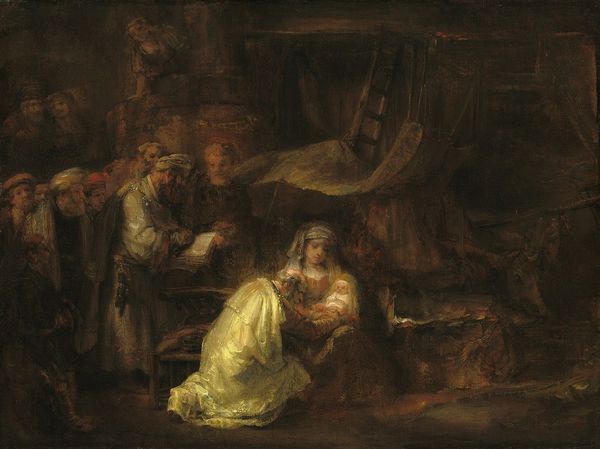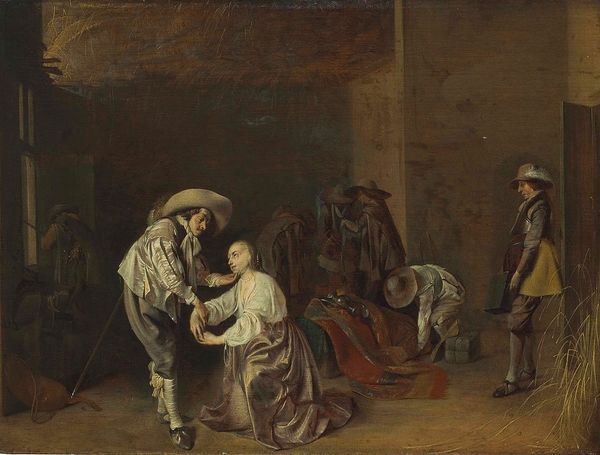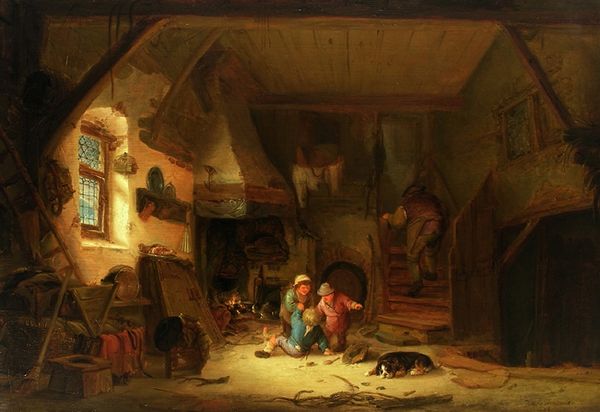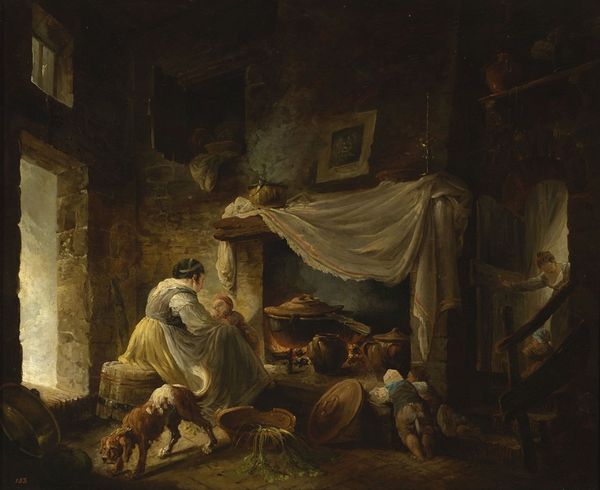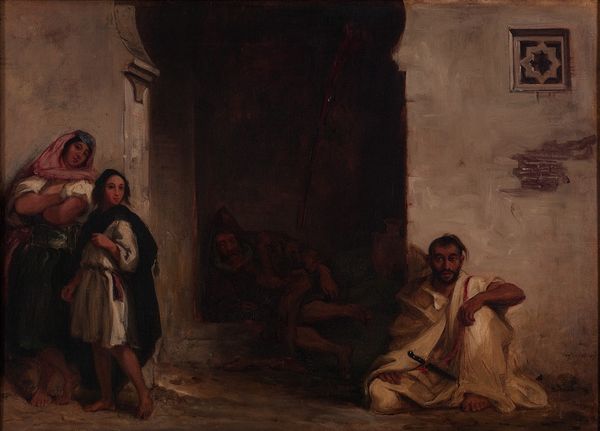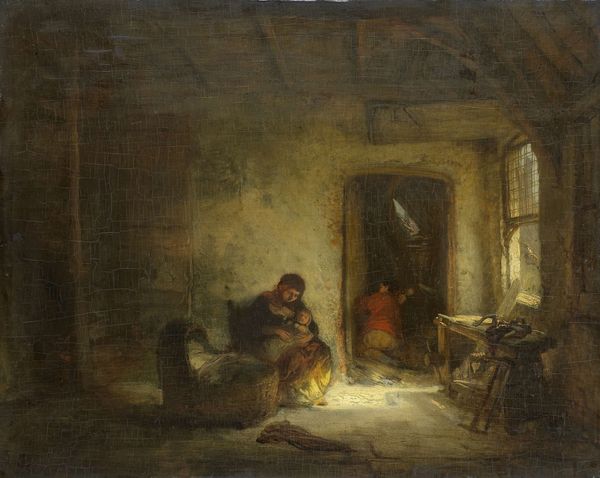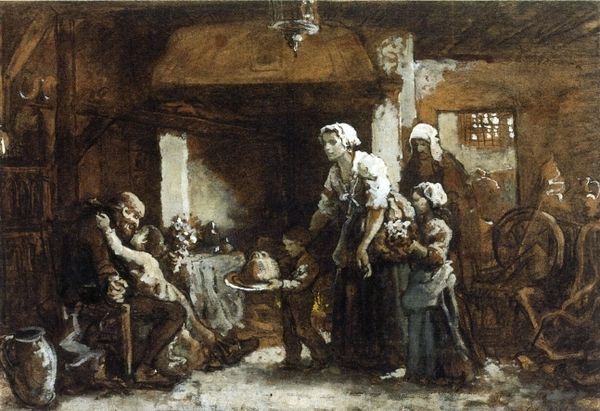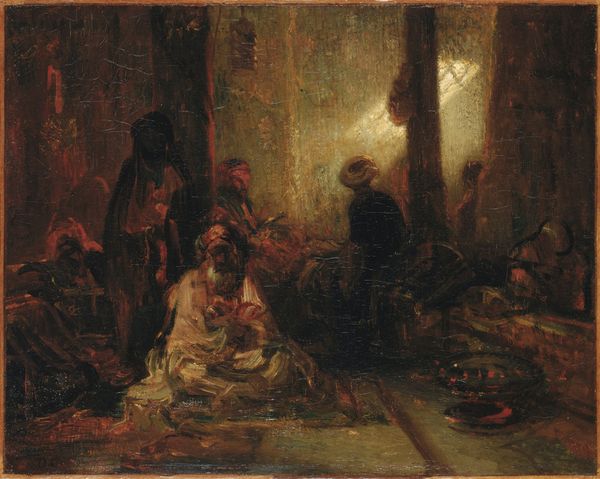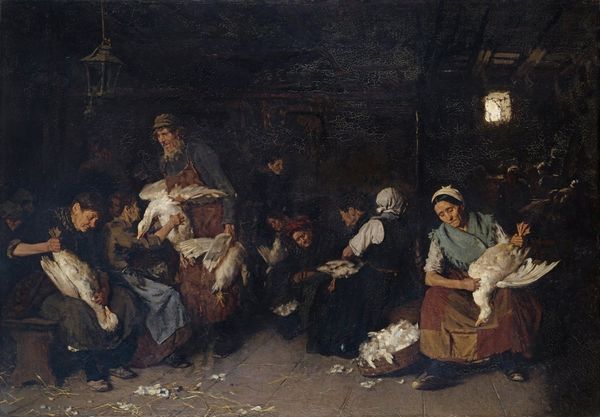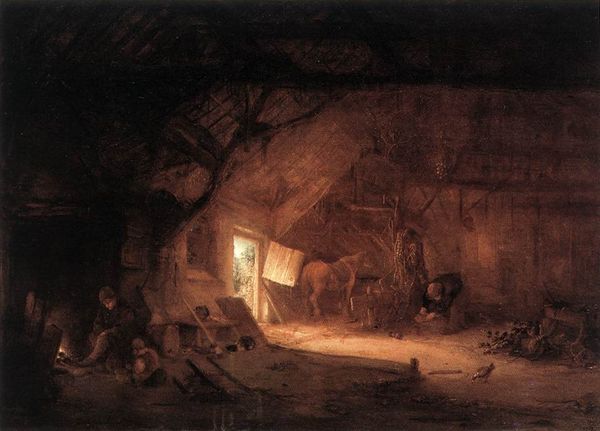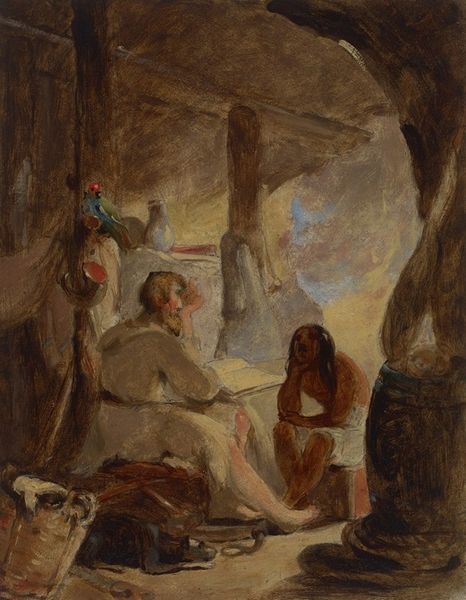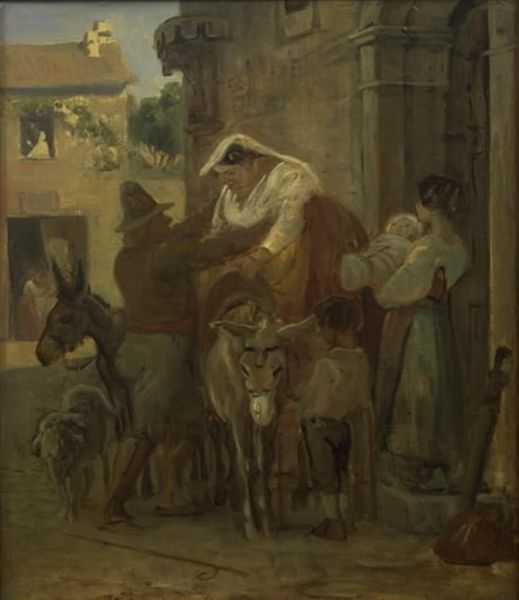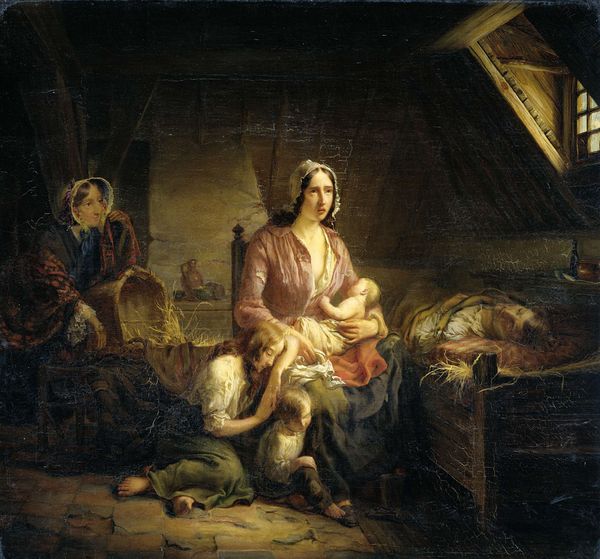
painting, oil-paint
#
figurative
#
painting
#
oil-paint
#
figuration
#
oil painting
#
romanticism
#
orientalism
#
genre-painting
Copyright: Public Domain: Artvee
Curator: There's a striking stillness in this image, isn't there? I am instantly drawn to how intimate the domestic setting feels. Editor: It is indeed quiet. "At Rest, Algeria," a painting believed to be the work of Frederick Arthur Bridgman. The scene is cast in earth tones illuminated by flickering firelight; women in traditional garb gather, creating an intimate communal scene. Curator: Notice how the flames animate their faces, creating shadows that lend an almost mythical quality to their postures and veils. There's a timeless quality to this domestic scene, something universally recognizable about companionship and the hearth. Editor: Yes, and this is achieved through a carefully staged Orientalist lens. This genre presented the "Orient" as timeless, unchanging, a space onto which Western fantasies were projected. The painting freezes Algeria at rest as if resisting modernity. Curator: The symbol of 'rest' is fascinating; do you read it as a symbol of inertia or potential? The quiet moments captured—they speak volumes of private histories and internal worlds, no? The quietude in that circle resonates powerfully even now. Editor: Potentially both, right? Bridgman creates a harmonious vision, yes, yet he exoticizes and simplifies these Algerian women. It romanticizes colonial power relations, reinforcing Europe’s dominance by emphasizing cultural difference. I wonder if what looks serene isn’t, in fact, imposed silence? Curator: It is undeniable; Bridgman approaches this 'at rest' moment through the lens of the late nineteenth century, with Europe grappling with colonial ambitions and a desire for exoticized tranquility. The symbolism may inadvertently reveal more about the observer than the observed. Editor: Ultimately, the composition offers us layers. Bridgman, celebrated for his Orientalist subjects, delivers a complex visual artifact inviting interrogation. The brushstrokes hide, yet also reveal—histories and political stances embedded within those shadowy figures. Curator: What appears serene is indeed laced with histories—an important takeaway. Editor: Indeed, images are seldom neutral; they often beckon a much richer conversation beyond aesthetics.
Comments
No comments
Be the first to comment and join the conversation on the ultimate creative platform.
